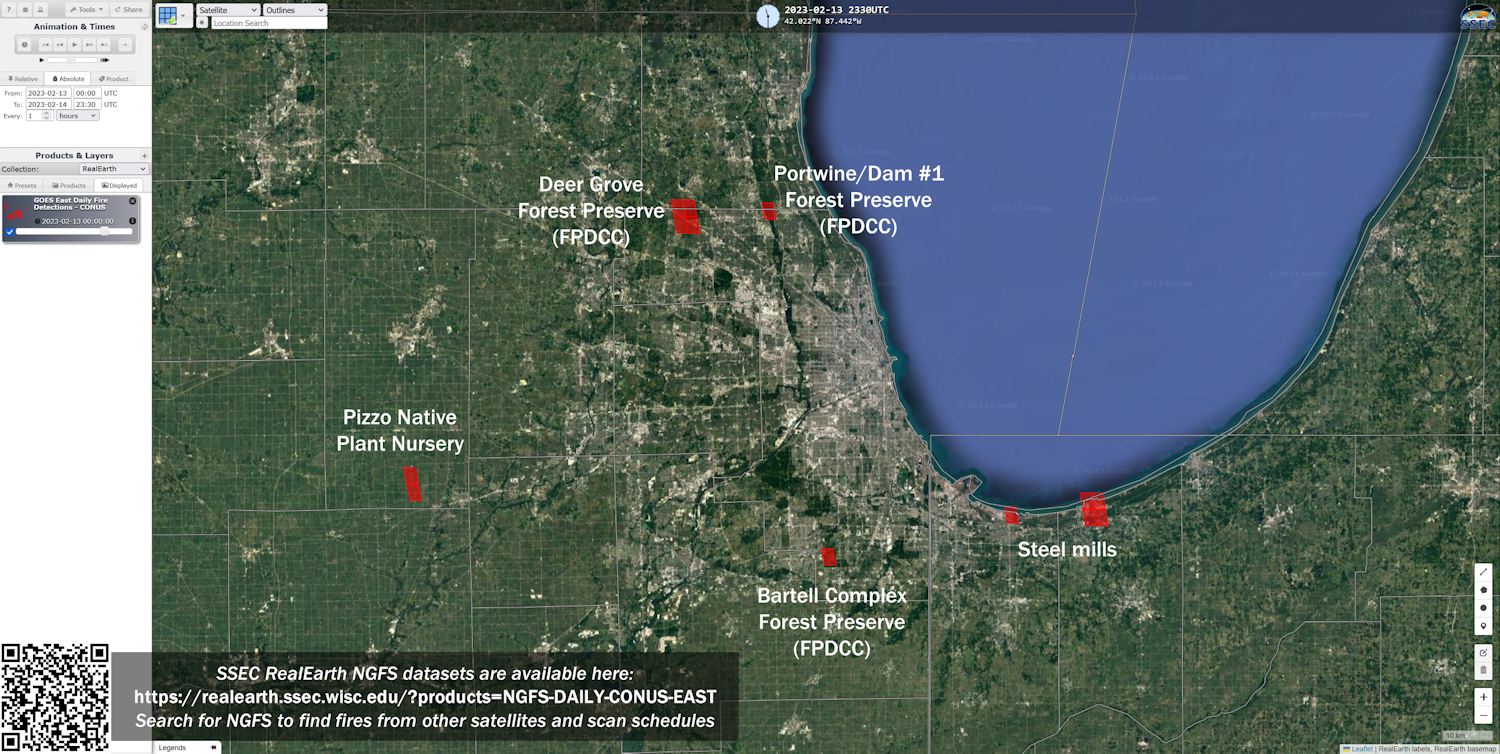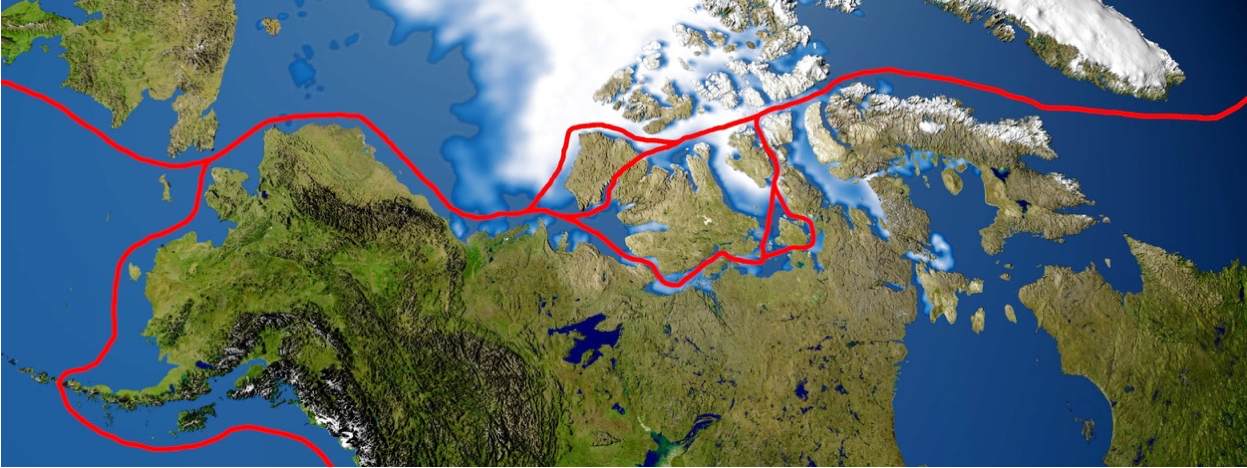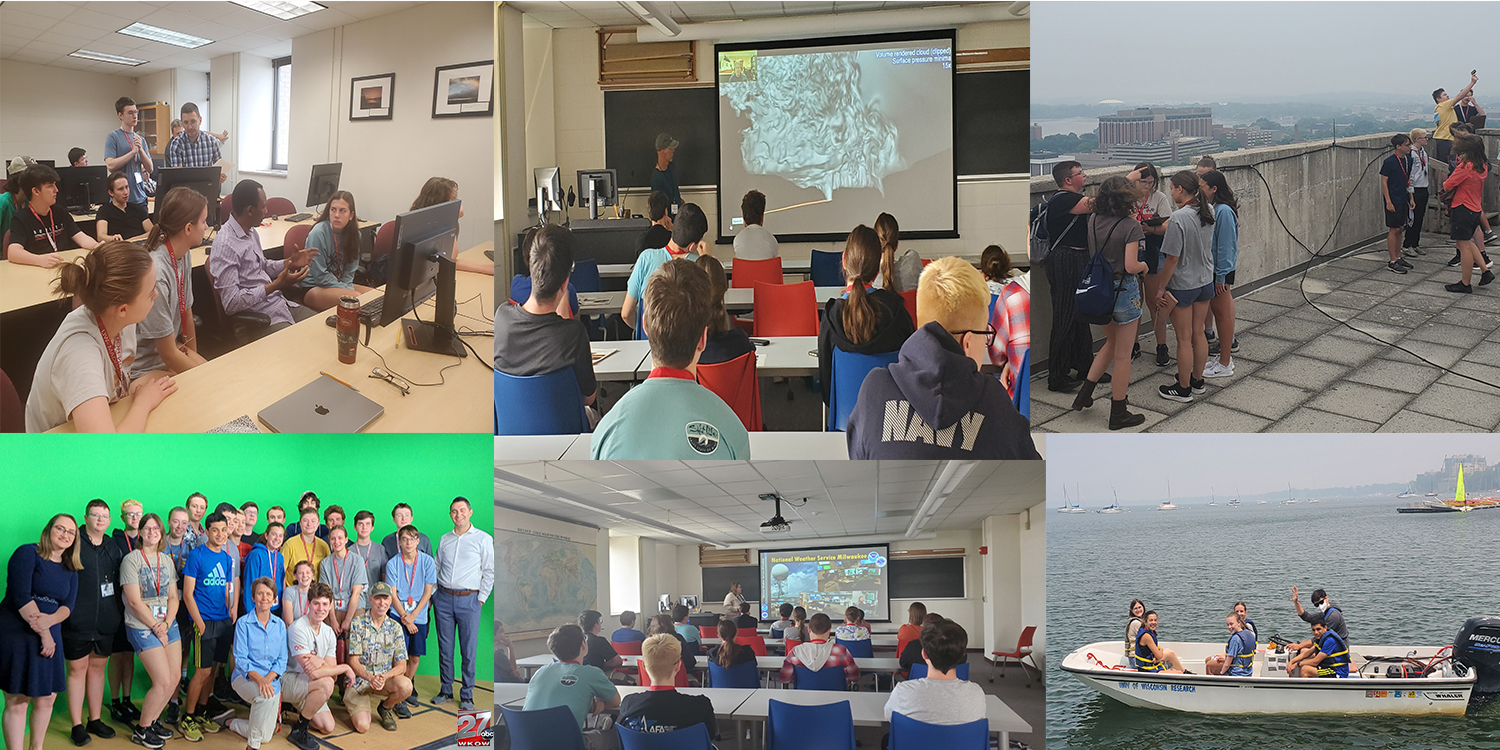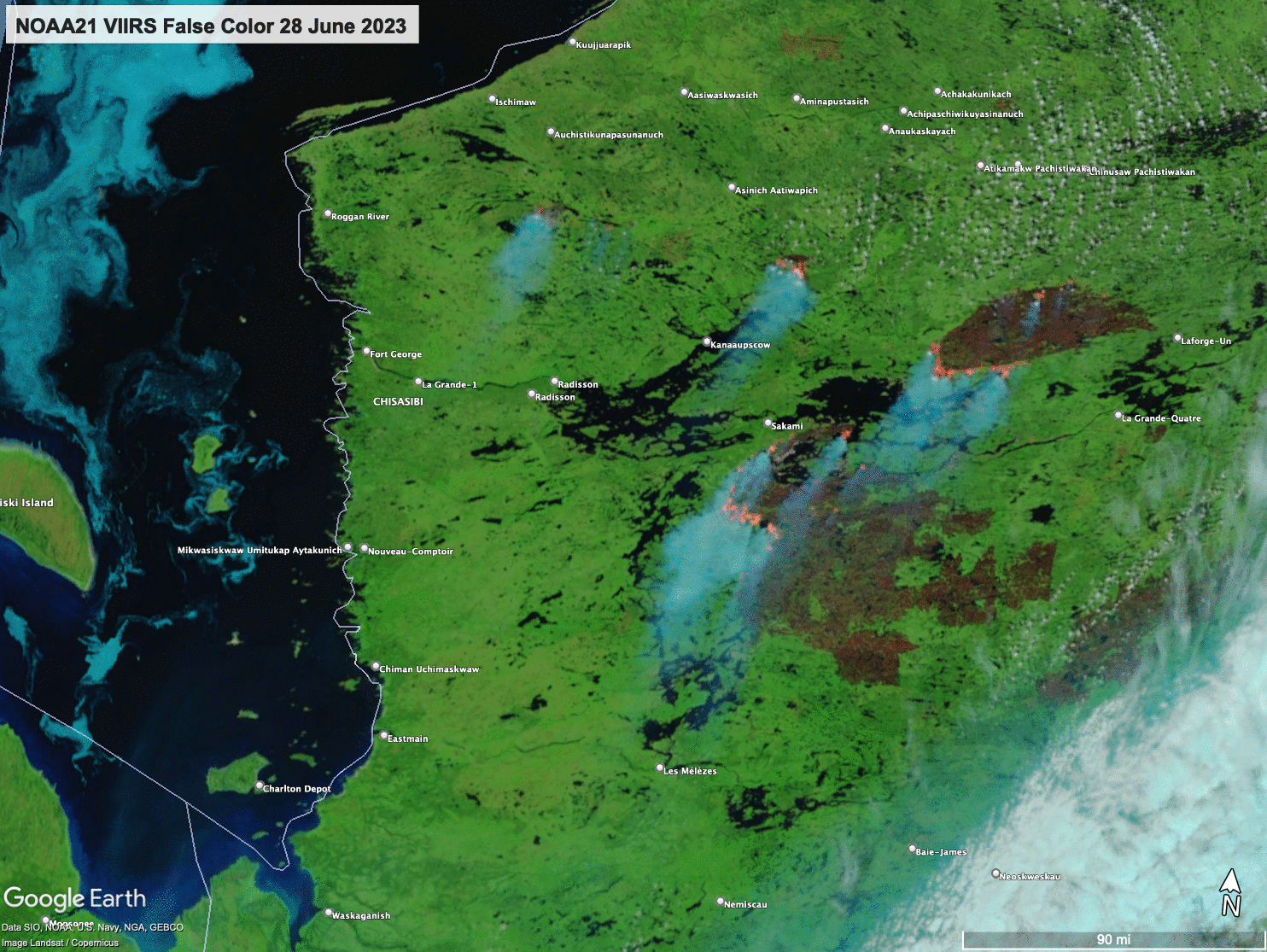
[ Archive ]

 |
CIMSS-NOAA Weekly Report [ Archive ] |
 |
CIMSS AND ASPB WEEKLY HIGHLIGHTS FOR THE WEEK ENDING JUNE 30, 2023
DATA, INFORMATION, AND USE-INSPIRED SCIENCE:
FUTURE OUTLOOK:
AWARDS AND RECOGNITION:
TRAVEL AND MEETINGS:
GOES Presentation at AMS Broadcaster’s Conference: Chris Schmidt of the Cooperative Institute for Meteorological Satellite Studies (CIMSS) discussed the use and interpretation of the GOES-R Advanced Baseline Imager (ABI) products and imagery at the American Meteorological Society’s (AMS) 50th Annual Broadcast Meteorology Conference (BMC). The AMS BMC brings together television, radio, and online meteorologists, and the vendors who provide them with products and other content, for training and networking opportunities. “Interesting and Educational Things We Can See in GOES Imagery” highlighted several GOES products and imagery that the audience may not be as aware of, such as derived products and RGBs that have been highlighted on the Satellite Liaison Blog and the CIMSS Satellite Blog, as well as those available through the Space Science Engineering Center’s (SSEC) RealEarth and the Cooperative Institute for Research in the Atmosphere’s (CIRA) Satellite Loop Interactive Data Explorer in Real-time (SLIDER). There was a focus on encouraging the audience to ask their vendors, NOAA, and others for access to imagery of various products if they found them useful. The broadcasters often rely on internet sources for satellite imagery and products given the bandwidth limits on what is available through their vendors. Due to their own resource limitations, the realtime websites sometimes don’t provide the useful products highlighted in the blogs, or not in formats that broadcasters can easily use. There has been a satellite presence at the AMS BMC since 2014, and those educational opportunities have led to increased awareness of the satellite products and some expansion of the satellite offerings from the major vendors. (C. Schmidt, CIMSS, 608-262-7973)
 (Click image to enlarge)
(Click image to enlarge)
Figure: Hotspots from prescribed burns and steel mills near Chicago on 13 February 2023 as seen in this prototype NGFS data display in SSEC’s RealEarth. As awareness of wildfires has increased, broadcasters get questions about smoke and fire observed by the public, such as prescribed burns occurring a month earlier than any other year. Three fires were run by the Forest Preserve District of Cook County and the fourth by a nursery. The NGFS provides accurate, terrain-corrected pixel footprints and a variety of information about the hotspot. The overlay on the high resolution satellite map makes it possible to identify likely sources.
TRAINING AND EDUCATION:
AMS/JPSS Short Course Module on Ice in the Northwest Passage: The American Meteorological Society (AMS) and the JPSS Program offered a virtual short course titled “NOAA Environmental Satellite Enterprise: Applications and Opportunities” on four days in June 2023. The short course consisted of four 2-hour training sessions: (1) "Ice to Algal Blooms - How are lakes responding to recent changes during every season?", (2) "Monitoring global lakes and reservoirs using multi-satellite observations", (3) "Monitoring and Predicting the Opening of the Northwest Passage", and (4) "Unique Career Pathways Working with Satellites and Their Observations across Various Disciplines". The first three sessions provided hands-on experience in applying environmental satellite data products to a range of environmental conditions. The fourth session was an opportunity to hear personal experiences about the career pathways of several professionals employed in different parts of the environmental satellite enterprise. These short courses are primarily designed for undergraduate and graduate college students, though there were many working scientists who participated. Almost 250 people registered for the short course overall, with the individual modules hosting 30-50 participants. Yinghui Liu, Jeff Key (both STAR), Kyle Obremski, and Scott Lindstrom (both CIMSS) developed and delivered the module on the Northwest Passage. A variety of JPSS sea ice products and atmospheric reanalysis data were examined by the participants in four breakout groups to predict and observe whether or not the Northwest Passage would be navigable (sufficiently free of ice) in two different years. (J. Key, E/RA2, 608-263-2605, jeff.key@noaa.gov; Y. Liu, E/RA2, 608-890-1893, yinghui.liu@noaa.gov; S. Lindstrom, CIMSS)
 (Click image to enlarge)
(Click image to enlarge)
Figure: Possible routes through the Northwest Passage.
CIMSS Student Workshop on Atmospheric, Satellite, and Earth Sciences : After an extended hiatus (due to covid) the CIMSS Student Workshop took place this week hosting 20 students from 12 states traveling to Wisconsin to attend this time-honored residential Earth Science camp at the University of Wisconsin-Madison (UW). Derrick Herndon from CIMSS (NOAA's Cooperative Institute for Meteorological Satellite Studies) was the camp director while Maria Vasys and Margaret Mooney handled logistics. Numerous experts from the Space Science and Engineering Center (SSEC) and the UW Department of Atmospheric and Oceanic Sciences (AOS) also shared their science and passion with this pre-college audience. Jaclyn Anderson from NOAA's Milwaukee/Sullivan National Weather Service Forecast Office drove over and presented as well. The students also visited a local TV weather station. Additional UW experts from limnology, astronomy and geology rounded out the program. The last time CIMSS held the Student Workshop on Atmospheric, Satellite, and Earth Sciences was the summer of 2019. (M. Mooney, CIMSS and D. Herndon, CIMSS)
 (Click image to enlarge)
(Click image to enlarge)
Figure: Scenes from the 2023 CIMSS Student Workshop.
MEDIA INTERACTIONS AND REQUESTS:
SOCIAL MEDIA AND BLOG Posts:
CIMSS Satellite Blog Updates: The Cooperative Institute for Meteorological Satellite Studies (CIMSS) Satellite Blog (https://cimss.ssec.wisc.edu/satellite-blog/) was updated with the following posts: "MCS with Derecho moves through the central United States" (June 29), "Hurricane Adrian in the Pacific" (June 29), "Wildfire in British Columbia produces a pyrocumulonimbus cloud" (June 28), "Burn scars over Canada revealed by JPSS VIIRS imagery" (June 28), "The view from the ground of poor Air Quality in Madison WI" (June 27) and "Severe thundstorms across Indiana" (June 25). (S. Lindstrom, CIMSS, S. Bachmeier, CIMSS)
 (Click image to enlarge)
(Click image to enlarge)
Figure: NOAA-21 True Color RGB and False Color RGB images over west-central Quebec, 28 June 2023.
PUBLICATIONS:
OTHER:
| Archived Weeklies Page | Submit a report item |